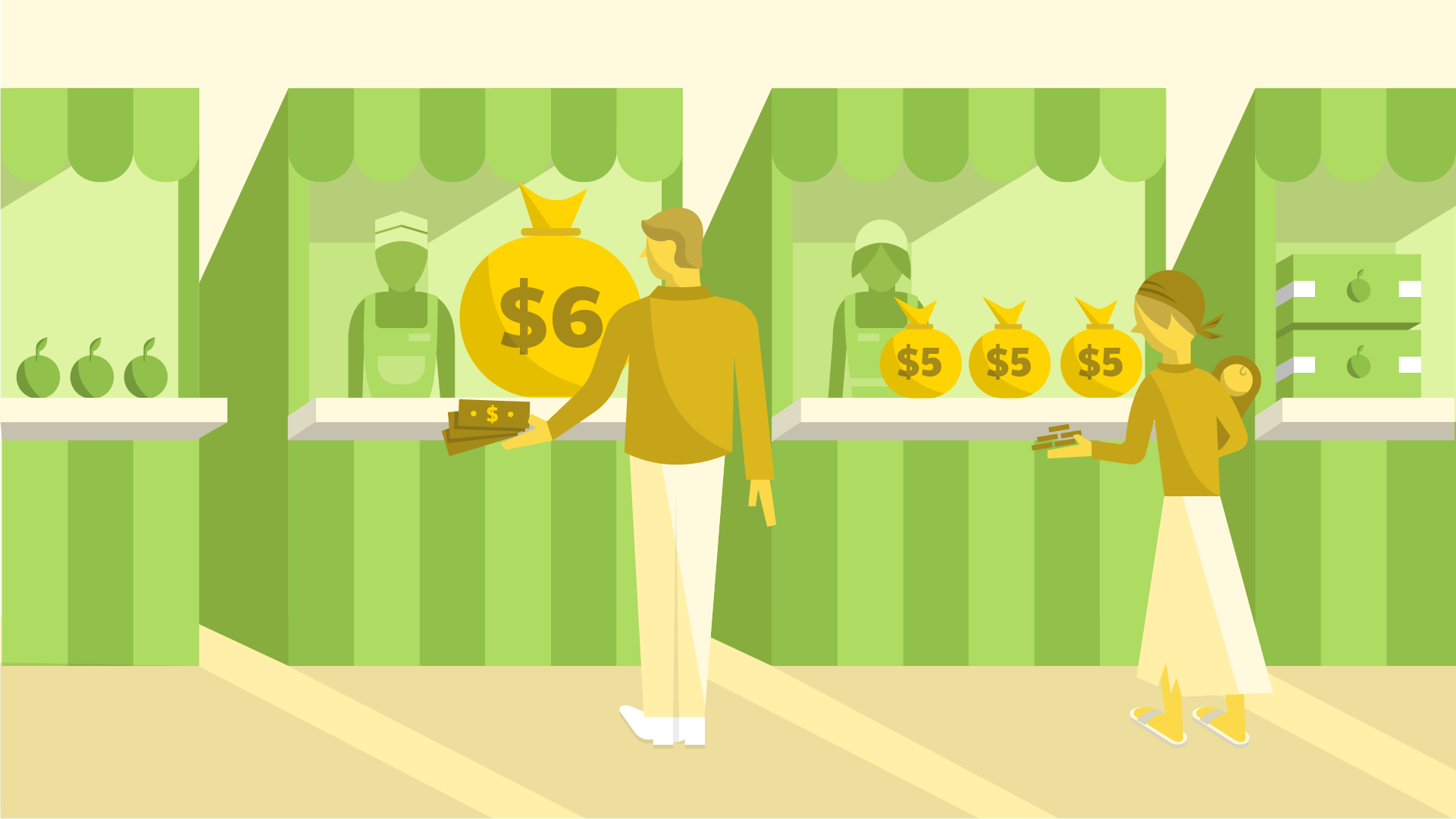
Nations around the world have addressed problems of poverty—malnutrition, poor health care, inadequate education—with “conditional cash transfer” programs (CCTs). These programs provide small cash stipends to participants who engage in specified behaviors—like buying healthy foods, attending maternal health clinics, or sending children to school. They’ve been widely adopted, from Brazil to Indonesia. Even New York City has a CCT.
The strategy is considered quite successful. Program evaluations document significant and often long-lived improvements in nutrition, health, and education. Policymakers, development experts, and health care and education professionals are largely unanimous in their praise.
Economists also view CCTs positively: Cash incentives distort markets far less than do regulations or price fixing. Most empirical studies have found that average prices for food are not noticeably affected in communities where CCTs have been implemented: The greater demand enabled by cash stipends hasn’t significantly increased or distorted average prices.
But careful study by Stanford economist Elena Pastorino, a senior scholar at the Opportunity & Inclusive Growth Institute in 2017-18, with Orazio Attanasio of University College London indicates that this benign assessment might not always be warranted. Their recent OIGI working paper from the Federal Reserve Bank of Minneapolis finds that CCTs’ economic effects are surprisingly nuanced.
Volume discounts for purchasing larger quantities of common goods and services are the norm in many developing countries, the economists observe, and this causes significant pricing shifts when customer demand increases due to CCTs. “The transfer has led to an increase in the intensity of price discrimination,” the economists find, using both a theoretical model and empirical analysis, “thereby reducing some of the benefits from the greater consumption.”
Although CCTs don’t affect average unit prices, the overall price schedule—the entire range of prices at which quantities are offered—changes as sellers extract more profit from customers with greater purchasing power. This price shift affects all households, including those who don’t qualify for the CCT program, suggesting that CCTs may have “a more limited beneficial impact than commonly inferred.”
A distinct but related finding: Pastorino and Attanasio also show that, in contrast to conventional wisdom, nonlinear pricing may well benefit the poor (who tend to purchase smaller quantities), despite the higher unit prices they pay relative to richer households, because if forced—by regulation, perhaps—to charge one price for all quantities, sellers are likely to set prices so high that many budget-constrained customers would be effectively excluded from the market.
Thus, a pricing practice that seems harmful to the poor may in fact help them, and a well-intended policy to benefit them might not work quite as well as most believe.
Reality checks
Pastorino and Attanasio’s model explicitly includes price discrimination—sellers charge different unit prices for buyers of different quantities—and, in crucial contrast to standard models, it also adds household subsistence constraints and differing absolute ability to pay for goods, as well as alternate buying or self-production options.
These features reflect actual food markets in developing countries: Most communities have just one or two stores that sell staple foods, creating substantial power to set prices, and nonlinear pricing is nearly universal. Families typically face severe budget constraints and may have options like growing their own food or paying subsidized prices at government stores.
Do these reality checks make a difference?
To find out, the economists build a model with these features, test its fit to actual spending and consumption patterns in small, remote Mexican villages, and then use it to gauge the impact of both nonlinear pricing and CCTs.
They use government data collected from 506 localities in seven Mexican states for the evaluation of Progresa, an anti-poverty CCT program launched in 1997. To focus on widely consumed foods of fairly uniform quality, they examine prices and quantities of rice, kidney beans, and sugar.
Comparing theory and reality, the economists find that their model’s mechanisms “explain” the village data remarkably well, accounting for over 90 percent of price-quantity variation for all three commodities. The model is therefore well-suited for analyzing the impact of nonlinear pricing on consumer welfare, as well as the effect of CCTs.
Discrimination is good?
The economists’ model shows that outcomes under nonlinear pricing are indeed better for consumers than the standard model featuring linear prices has suggested. Most consumers whose budget constraints lead them to buy small or medium quantities, “typically the poorest ones,” benefit from nonlinear pricing.
“Nonlinear pricing tends to lead to a greater degree of market participation, especially for consumers of small to intermediate quantities, which is all the more critical for the marginalized villages in our data,” write Attanasio and Pastorino. The explanation: Budget constraints imply a maximum price each consumer is able to pay and so induce sellers to behave more competitively than they would otherwise. In particular, sellers adapt their pricing schedules to consumers’ ability to pay, effectively tailoring prices and quantities to customers and thereby bringing more buyers into the market.
“Nonlinear pricing enables a seller to trade at a profit with consumers with more stringent subsistence constraints, typically poorer consumers purchasing smaller quantities.” Forced to charge a single unit price for all quantities, sellers would tend to offer fewer quantities at a higher price.
Because of this seller response, the economists estimate that over three-quarters of lowest quantity purchasers (often the poorest) would be excluded from buying kidney beans and sugar if linear prices were required. “Including these consumers typically would not be profitable under linear pricing.”
Ambiguous impact
In addition, Attanasio and Pastorino’s nonlinear model suggests that the benefits of CCTs are not as clear-cut as less-realistic models have implied. Cash transfers increase consumption, as intended, and thus seem likely to increase prices, but previous studies have found little if any change in average unit prices.
Attanasio and Pastorino confirm that finding for Progresa; it increases consumption without changing average prices. But as noted earlier, when they look beyond averages to the entire range of prices and quantities, they find a significant impact on the price schedule: Cash transfers are associated with an increase in the slope of the price schedule and, as a result, an overall increase in the degree of price discrimination.
Thus, the positive effect of the transfer on consumption is diminished by the associated increase in prices. This isn’t to say that CCTs are unwise—only that their full impact needs closer scrutiny. Since all households in the villages receiving the Progresa transfer have been affected by the change in prices, cash transfers may then have a more limited beneficial effect than is commonly estimated, because of their negative indirect price effect on all households, including those who were not eligible for the transfers. Hence, the degree of market competition among sellers is key to assessing the benefits of CCTs.





